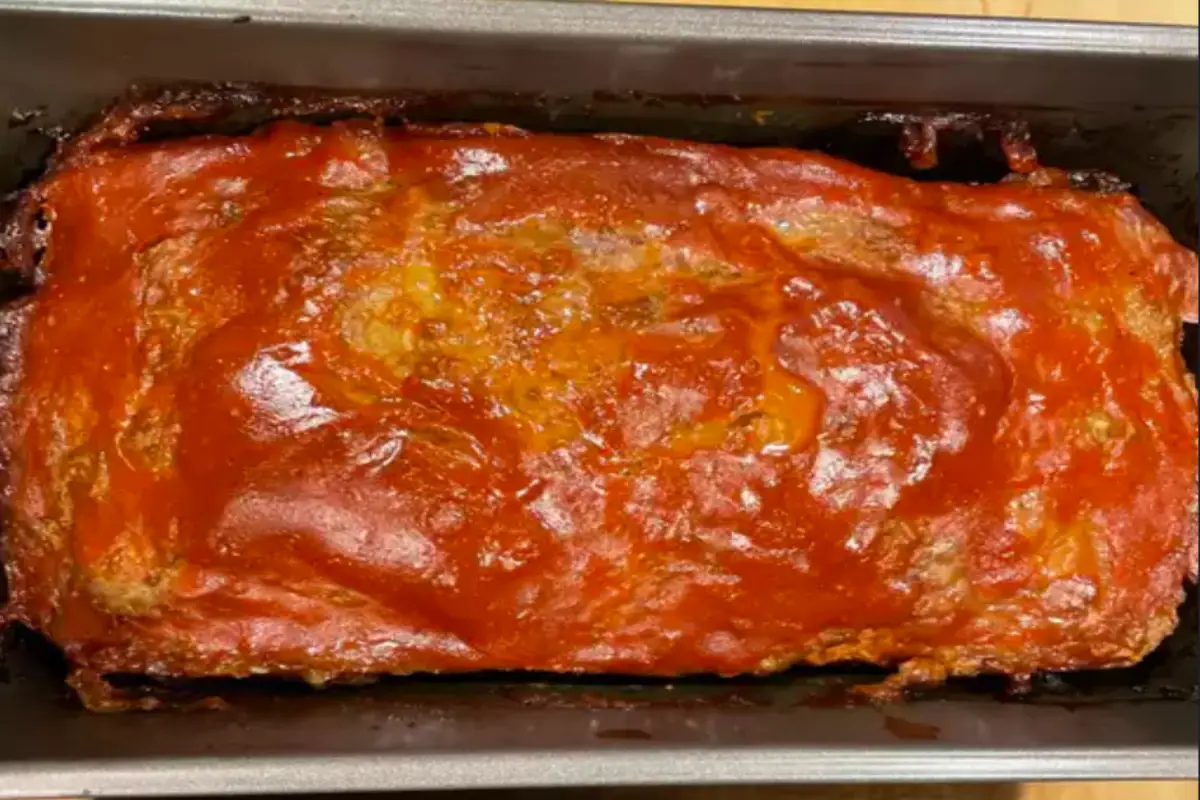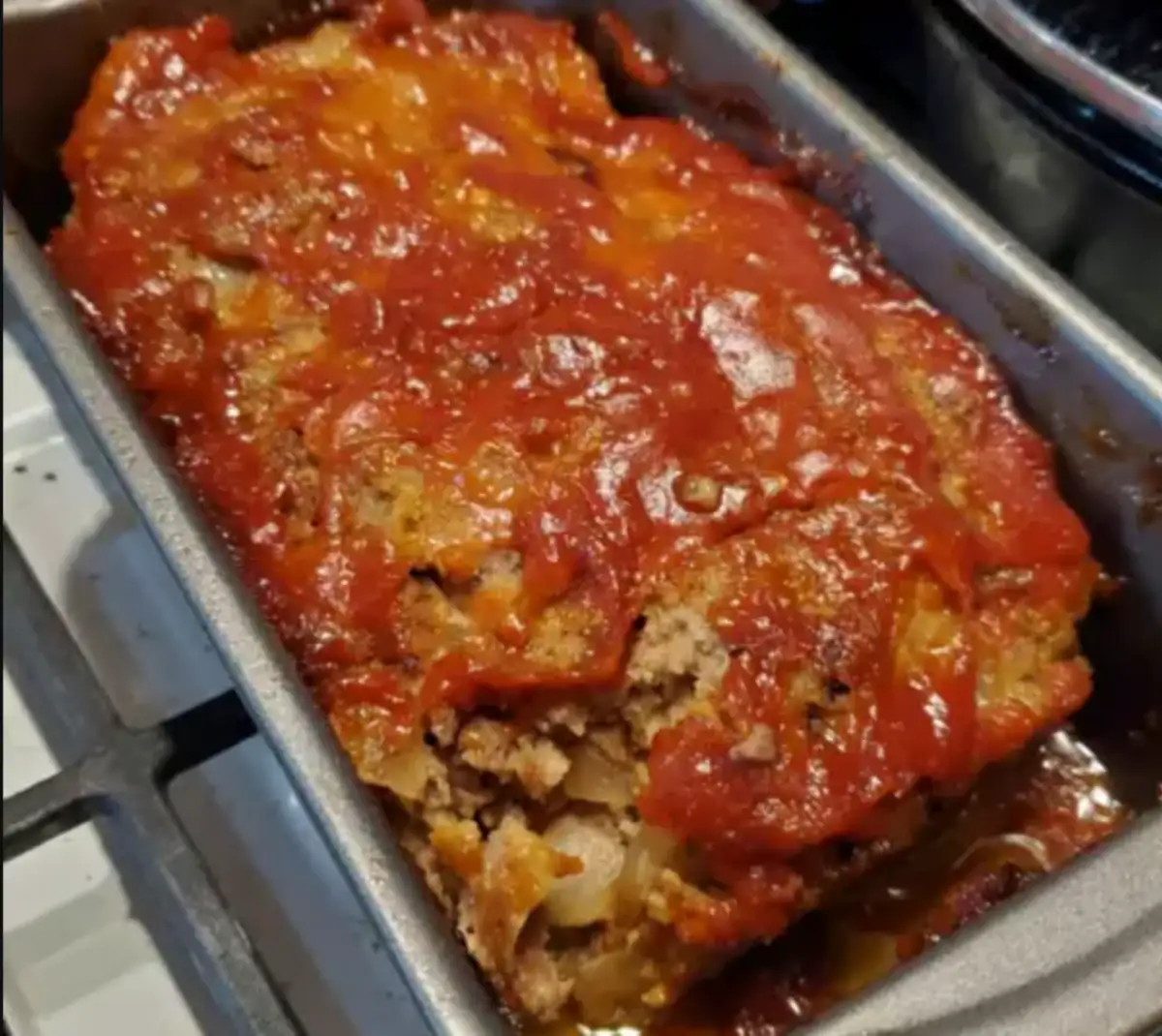Why Cooking Meatloaf Without a Loaf Pan? Meatloaf is a classic dish beloved by many, often prepared in the familiar confines of a loaf pan. This traditional method passed down through generations, has been the cornerstone of meatloaf preparation in countless kitchens. But what if there’s more to meatloaf than meets the eye? What if stepping away from the loaf pan could revolutionize your meatloaf experience?
In this article, we’re going to dive deep into the world of meatloaf preparation. We’ll explore why the loaf pan has been a go-to choice and uncover the potential limitations this method may impose on your culinary masterpiece. Are you ready to discover new horizons in the realm of meatloaf cooking? Let’s embark on this flavorful journey together!
For a twist on the classic recipe, check out the Cracker Barrel Meatloaf Recipe, a comfort food staple that’s sure to inspire your next culinary creation.
Understanding the Loaf Pan Approach
The loaf pan, a staple in many kitchens, has long been the default choice for meatloaf preparation. Its shape and size seem perfectly suited for the task, creating that classic, recognizable meatloaf silhouette. But why is this method so prevalent? The loaf pan offers convenience – it shapes the meatloaf without effort, contains the juices, and makes for an easy-to-slice serving. However, convenience doesn’t always equate to culinary excellence. The enclosed space can lead to uneven cooking, with the outside potentially becoming too dry before the inside is fully cooked. Additionally, the trapped steam may make the meatloaf soggy, detracting from the desirable crust that many meatloaf aficionados crave.
While exploring different cooking methods, it’s also interesting to note how restaurants like Cracker Barrel adapt, as seen in the Cracker Barrel Meatloaf Daily Service, showcasing their approach to calories and menu changes.
Why don’t you want to cook the meatloaf in the loaf pan?
So, why consider alternative methods? First and foremost is texture. Cooking meatloaf in a loaf pan can result in a denser, more uniform texture, which might not be everyone’s preference. Free-form cooking methods, like baking on a tray, allow for a more varied texture, with a crispier exterior and a tender interior.
Cooking time is another factor. A loaf pan can extend the cooking time due to its depth and density. Alternatives like baking sheets or muffin tins allow for quicker cooking, ensuring a juicy and flavorful outcome without overcooking.
Lastly, moisture retention is a crucial aspect. While the loaf pan keeps in moisture, it can sometimes be too much of a good thing, leading to a meatloaf that’s more steamed than baked. Alternative methods allow excess moisture to escape, creating a more balanced and appealing texture.
Alternative Cooking Methods for Meatloaf
Exploring other techniques opens up a world of possibilities for meatloaf enthusiasts. Baking on a tray, for instance, exposes more surface area of the meatloaf to the oven’s heat, resulting in a delightful crust. Using a muffin tin can transform your meatloaf into adorable, single-serving portions that are perfect for meal prep or entertaining. Each method brings its own set of benefits, from shorter cooking times to enhanced flavors and textures.
Tips for Perfect Meatloaf Every Time
Regardless of the cooking method you choose, certain tips can elevate your meatloaf. Selecting the right mix of ingredients is crucial – a combination of meats for complexity, breadcrumbs for texture, and the right blend of seasonings for flavor. The mixing technique also plays a role; over-mixing can lead to a tough meatloaf, so gentle mixing is key. Finally, let’s not forget about seasoning. The right herbs and spices can transform a good meatloaf into a great one.
To delve deeper into what makes a meatloaf truly stand out, explore our guide on the Secret to Great Meatloaf, which focuses on the ingredients that elevate this dish to perfection.
FAQs Section
Why not cook meatloaf in the loaf pan?
Cooking meatloaf in a loaf pan can sometimes lead to issues like uneven cooking, excessive moisture, and a lack of a crispy exterior. While it’s a traditional method, exploring other cooking techniques can result in a meatloaf with a more desirable texture and flavor profile.
How do you get meatloaf out of a loaf pan?
To remove meatloaf from a loaf pan, let it rest for about 10 minutes after baking. This allows it to firm up and makes it easier to transfer. Then, gently run a knife along the edges to loosen it and carefully tip the loaf pan over onto a serving plate.
How do you keep the meatloaf from sticking to the loaf pan?
Prevent sticking by lightly greasing the loaf pan with cooking oil or non-stick spray. Lining the bottom with parchment paper can also be a helpful trick. Another method is to place a strip of bacon at the bottom of the pan before adding the meat mixture.
What is the secret to juicy meatloaf?
The key to a juicy meatloaf lies in the right balance of ingredients and cooking methods. Using a blend of meats, adding moist ingredients like sautéed onions or soaked breadcrumbs, and not overcooking is essential. Also, consider cooking methods that allow excess moisture to escape, like baking on a tray.
Rethinking the way we cook meatloaf can open up a world of culinary possibilities. While the loaf pan is a tried-and-true method, it’s not the only way to achieve a delicious meatloaf. By exploring alternative cooking methods, you can enjoy a meatloaf with a more appealing texture, a perfectly crispy exterior, and all the juicy, savory flavors we love. So, the next time you’re in the mood for meatloaf, why not step outside the loaf pan and try something new?


